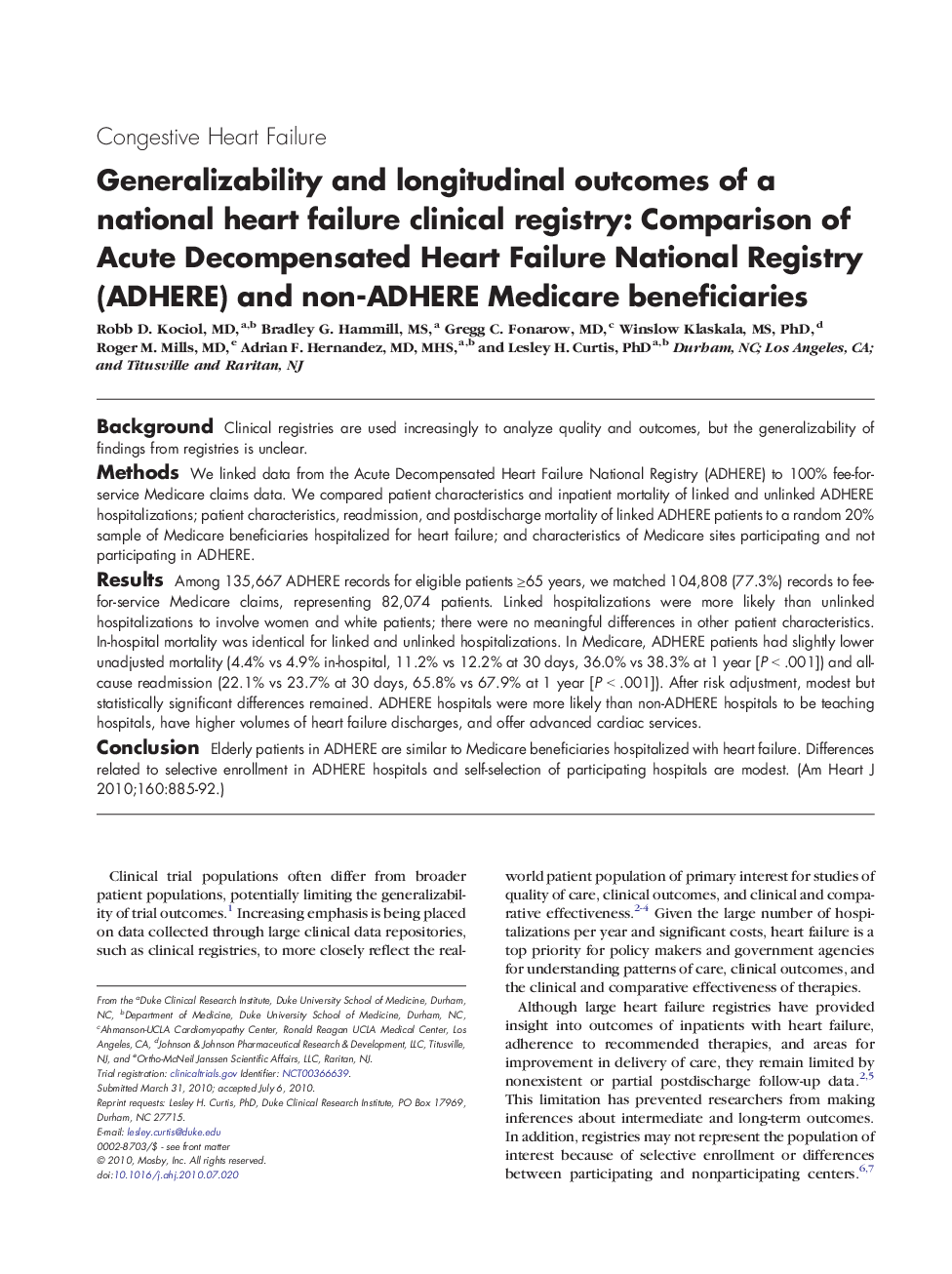| Article ID | Journal | Published Year | Pages | File Type |
|---|---|---|---|---|
| 2850434 | American Heart Journal | 2010 | 8 Pages |
BackgroundClinical registries are used increasingly to analyze quality and outcomes, but the generalizability of findings from registries is unclear.MethodsWe linked data from the Acute Decompensated Heart Failure National Registry (ADHERE) to 100% fee-for-service Medicare claims data. We compared patient characteristics and inpatient mortality of linked and unlinked ADHERE hospitalizations; patient characteristics, readmission, and postdischarge mortality of linked ADHERE patients to a random 20% sample of Medicare beneficiaries hospitalized for heart failure; and characteristics of Medicare sites participating and not participating in ADHERE.ResultsAmong 135,667 ADHERE records for eligible patients ≥65 years, we matched 104,808 (77.3%) records to fee-for-service Medicare claims, representing 82,074 patients. Linked hospitalizations were more likely than unlinked hospitalizations to involve women and white patients; there were no meaningful differences in other patient characteristics. In-hospital mortality was identical for linked and unlinked hospitalizations. In Medicare, ADHERE patients had slightly lower unadjusted mortality (4.4% vs 4.9% in-hospital, 11.2% vs 12.2% at 30 days, 36.0% vs 38.3% at 1 year [P < .001]) and all-cause readmission (22.1% vs 23.7% at 30 days, 65.8% vs 67.9% at 1 year [P < .001]). After risk adjustment, modest but statistically significant differences remained. ADHERE hospitals were more likely than non-ADHERE hospitals to be teaching hospitals, have higher volumes of heart failure discharges, and offer advanced cardiac services.ConclusionElderly patients in ADHERE are similar to Medicare beneficiaries hospitalized with heart failure. Differences related to selective enrollment in ADHERE hospitals and self-selection of participating hospitals are modest.
